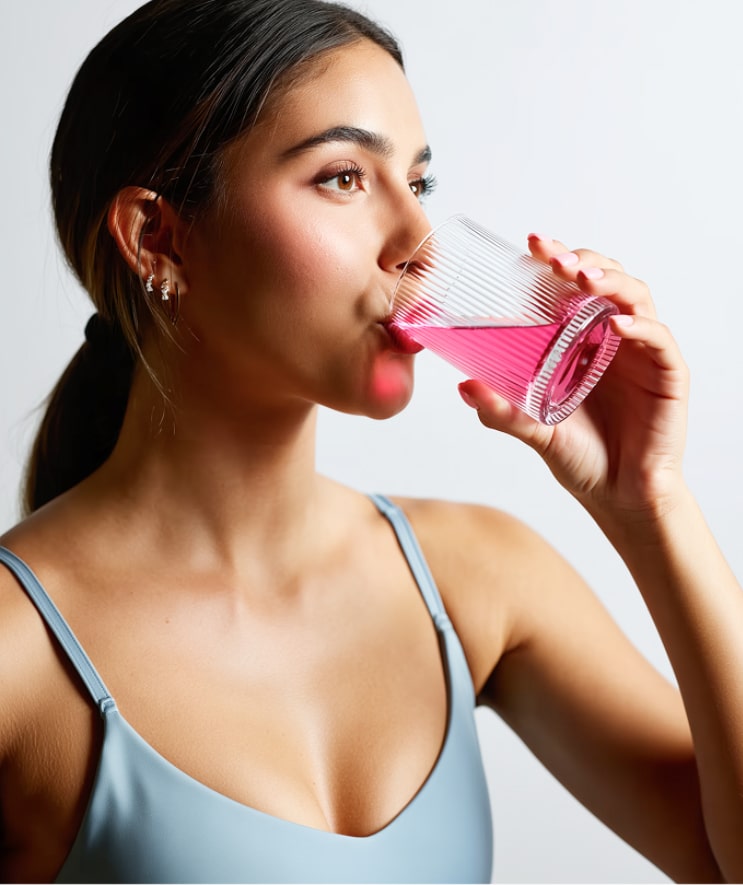It feels like every celebrity has discovered a magical formula that will make our skin smoother than ever, age better, and give us the confidence we lack.
They might! Who are we to say?
But there are institutions, or better said, people, that have the authority to judge.
The internet is full of information, and it is impossible to see the truth through all the opinions and paid influencers. However, science is still a reliable source. And we believe in science.
But even science can be tricky. Many brands claim to have studies on their products, while in reality, the “studies” they are referring to are self-evaluation studies done with around ten people. Everyone has to decide for themselves if a study like that is a credible source of information for them.
It is certainly not good enough for us
For TOSLA standards, the studies must be conducted by credible external institutions and credible people and not “in-house”. This avoids being biased. External institutions must do the studies with proper quality control. These institutions must have good clinical practices and be aligned with the Helsinki Declaration. It is essential to say that the most reliable clinical studies are “double-blinded.” Meaning neither the volunteers nor investigators know the product the volunteers are receiving.
On top of that, it should also be placebo-controlled. Only if there is a comparison without the active ingredients can we be sure that the observed effects are due to the active ingredients incorporated into the product.
Analytics over opinions
The differentiation between a good study and reliable results vs. unreliable study and results, can be challenging for an ordinary customer to understand.
There are different ways of doing a study. Some are based on expert opinions that detected significant changes in their skin. This is low or no-value research. An expert or even an ordinary user could see some changes, but there should always be a point of control with which the results could be compared. Meaning even an opinionable study should include two groups of subjects: one group that has received a placebo product and another group that has received an active product.
In the case of the results, the results being opinions, being much higher on the active product than the placebo product, we can claim the probability of the effect of the active product.
Therefore, it is crucial to have a proper statistical analysis of the given results. It is highly recommended to use a more objective measurement of the effect (more objective than opinion) if one is available.
Time matters
Moreover, it is critical to know how and when to collect data.
If the study is done on the skin, the seasonal differences in nature play a significant role in the results. For example, skin hydration worsens when winter approaches, and it gets better as the season changes into summer. If we start the clinical study in the winter and you are doing it while approaching the summer, the skin will get better by itself. For that reason, it is crucial to have a placebo to be able to observe the effect of the active product. Without a placebo, claims the improvements might only be due to the skin’s natural cycle. Unfortunately, sometimes we can still see such studies without a placebo control and proper statistical analysis.
The importance of testing the formulation
Studies are pricey, making it hard or even impossible for some businesses to invest in them.
And since some ingredients already have a clinical study, using branded ingredients with a proven result can be a shortcut for a small business.
But should companies just take the ingredients that have clinical studies and apply those to their brand? It is essential to research the facts about the ingredient itself to know that it will work in a certain way. However, it is also vital to test the formulation. The interactions between ingredients and the operability of the ingredients can influence the formulation in which active ingredients are included. Sometimes, up to several times just by changing the form and thermic process. Therefore, only testing the formulation gives the results on the efficiency of a product.
On the other hand, because ingredients can have a synergic effect on one another, and adding a particular ingredient can allow the other ingredient to absorb better or protect it in the system, or they can support each other. The end result could be better when certain ingredients are combined.
Key takeaways:
- Research must be done by external, credible institutions with proper quality control and aligned with the Helsinki Declaration.
- A point of control, a placebo group, with which the results are compared is needed + the golden standard for the industry is double-blinded placebo research.
- A proper statistical analysis of the given results is crucial + pay attention to when the data is collected (e.g. seasonal differences play a significant role when it comes to skin).
- Active ingredients in a formulation can interact with each other or have a synergic effect, therefore, it is crucial to test the formulation instead of individual ingredients.





